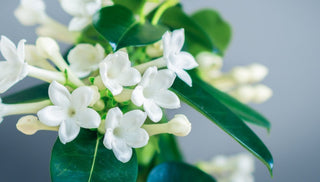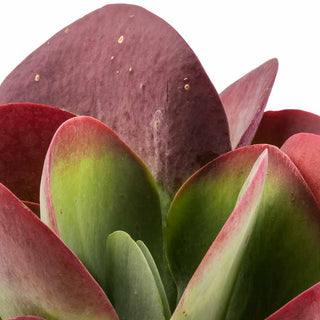☘ Origin: Asia and Australia
☘ Family: Apocynaceae
☘ Botanical Name: Hoya
☘ Common Name: Wax Plant
Symbolism: Hoya aids us in connecting to our higher knowledge, opening in receptivity to fate and its fulfillment. Bright and intensely clearing, Hoya creates a feeling of stillness through which you can hear the quieter calls of living - inward exploration, spiritual enlightenment, and alignment with the divine.
🍃 Shop Your Hoya Today!
🔆 Light
Enjoys bright, indirect light, however a little direct sunlight will be a good thing. It can tolerate lower light but will likely produce flowers if placed in brighter light. The more light it receives, the more vibrant the foliage and the more flowers it will produce.
Give your plant a turn every few days to expose all sides to light for even growth from all sides.
💧 Water
Water your Hoya when the pot becomes 100% dry. Water thoroughly until water flows through the drainage hole. Discard any excess water in the saucer.
To give your plant the absolute best, room-temperature rainwater and bottled spring water are your best options. Any water containing sugar or salt will hurt your plant!
☁️ Humidity
Average household humidity but will appreciate added humidity, so try to mist it often with clean filtered water.
🌡️ Temperature
The ideal room temperature is between (15-29°C). If the temperature falls below (13°C), it will stop growing.
🧴️ Food
For best results, use a general-purpose liquid houseplant fertilizer at half strength once every month during the spring and summer. There is no need to feed your plant in the winter when growth naturally slows. Before applying any form of fertilizer make sure the soil is damp.
🐾 Toxicity
Non-toxic to humans and pets.
When Hoya plants mature, they will produce clusters of star-shaped flowers. Do not remove the spent flower stems after your Hoya blooms–it can produce flowers on those stems again the next time it blooms. Also, do not move the Hoya after it begins to develop new flower buds. Moving the Hoya could disturb it and cause it to drop the buds before they open.



